What Facebook Posts Say About You
On average, Facebook is home to 3 billion daily active users — from CEOs to students to companies. And while the community is clearly there, connecting with them from a marketing standpoint isn't always easy. For brands, posting on Facebook alone isn't enough anymore, especially for ones just starting out. Sure, you can throw money at your efforts to drive people to your Facebook Page and send them to your website, but that only works if you're smart about it. One way to get the most from your Facebook ad strategy is to create optimized Facebook Ads targeted at the right audience. Optimized ads can help you spend your PPC budget wisely and see a positive return on your investment. What makes Facebook ads really effective is the level of audience targeting, the number of users on the platform, and the level of analytics and insights. These advantages combined with a great strategy is why Facebook ads work for so many types of businesses. As with any type of advertising, it takes iteration and experimentation to see success with Facebook ads. So, what does optimized Facebook advertising actually look like? If you're looking for some great examples, you've come to the right place. In this post, we'll quickly go over the following things about the best Facebook ads. Click a link below to jump to that section of the article: Before we get to the Facebook ad examples outlined above, let's discuss what makes a great Facebook Ad — regardless of the format and template the ad is using. Despite all of the advantages that Facebook offers advertisers, seeing success on Facebook ultimately comes down to your strategy and how well you implement it. Your ad will perform best if: Audience quality is more important than size because, with Facebook advertising, the goal is engagement and/or conversions. Casting a wide net to individuals who are not your target audience will tank your relevance scores and give you bad data to work from. The good news is that Facebook's targeting capabilities are more robust than any other platform, including demographics, interests, location, and even behavior. That means you can get far more specific on who you want to see your ads. For example, you don't have to settle for "women between ages 25 and 45" when you can target "women between ages 25 and 45 who like reading and whose favorite author is Suzanne Collins." By getting granular, you end up excluding users who are not your target market, showing ads to only those who will find it most relevant and who are most likely to convert. Relevance is critical for success when using Facebook advertising. Remember, you are spending money when someone views or clicks on your ad (depending on the settings you use). If you're showing ads that aren't relevant to your target audience, you're wasting your time and money and will likely not see success with any kind of advertising. Back in February 2015, Facebook launched a feature in the Facebook advertising platform that rates your ads and gives you a relevance score, similar to Ad Rank in Google Ads. The more relevant your ad image, ad copy, and destination page is to your audience, the higher your score is — and the more favorably Facebook will treat your ads. Visual content is not only treated more favorably in the Facebook algorithm, but it's also more likely to be shared and remembered than written content. The lesson for Facebook marketers? No matter what type of ad you create, your image needs to be visually appealing. Check out this blog post for a detailed guide to image sizes for various ad units on Facebook along with some tips on posting visual content. Let's say you're running an ad for astrological jewelry. You're targeting people who like astrology and whose birthday is coming up. You could use generic "buy a bracelet with your astrology sign" copy paired with an image/video of all the jewelry. A better strategy, however, would be to target those whose birthdays are coming up, and create a more specific ad targeting that astrological sign (e.g. "All you Geminis out there will love this" paired with a video of a specific Gemini product). Aligning copy and visuals in a way that's relevant to the targeted audience provides a feeling of personalization which increases the likelihood of engagement and/or conversion. You'll also see better ad performance due to higher relevance scores. A value proposition tells the reader why they should click on your ad to learn more about your product. How is your product or service different from any other? Why should the viewer click on your ad to see your website? Your value proposition should be believable. For example, saying you have the greatest sandwiches in the world will not make people come to your business's Page, but maybe offering 20% off will. Or, perhaps adding social proof will help — something like, "Sandwiches loved by over one million people every year! Come try yours today and get 20% off your order with this coupon." A beautiful and relevant ad is great, but without a call-to-action (CTA), your viewer might not know what to do next. Add a CTA like "Buy now and save X%," or "Offer ends soon" and add a sense of urgency to your viewer. Your CTA should encourage people to click on your ad now. See these best practices in action with our collection of 50 Facebook Ad Examples from real businesses that we admire. Facebook Ads work by targeting a group of Facebook users that all share similar characteristics, and placing your ad on these users' News Feeds or right column. There are eight different ad formats you can choose from, each catering to the specific goals you might want your ad to accomplish. To invest in Facebook Ads effectively, you first need to know whom your ads are directed toward. When creating a new ad on Facebook, you can create a new audience that includes many customizable characteristics. Among them are: You can also create what's called a Lookalike Audience, which permits Facebook to create an audience for you that best resembles a particular "source." This source can include some or all the information listed above. After customizing your ad's audience, you need to consider how the ad will look on both desktop and mobile. This ensures you design your ad for easy viewing no matter where it appears on Facebook. Here are three different places you can see your Facebook Ads show up: Image via Facebook This type of ad is the most traditional on Facebook, it appears on the right side of a user's Facebook News Feed. This is the first type of advertising Facebook had, and it still exists today. Although ads in the News Feed are likely to get higher engagement metrics due to its native advertising features, right column ads shouldn't be forgotten. We often see less expensive clicks and conversions when using these ads. In order for a right column ad to be successful, it needs to be relevant, have a value proposition, a good visual, and have a call-to-action. Image via Facebook This type of ad appears directly in a user's News Feed when they access Facebook on a desktop computer, and it looks more like native advertising. In our experience, these ads have a higher engagement rate than right column ads, but they can also be more expensive. These ads must follow organic Facebook posts best practices and be both engaging and visual. Image via Facebook Like the desktop News Feed ad, this type of ad appears in the user's mobile News Feed and displays like an organic post from the people and Pages they follow. Next, you'll choose a format for your Facebook Ad, and there are eight options to choose from: Photo Ads are still images that can help to promote a product or event you want to specifically call attention to. If you have a special promotion going on, for example, this ad format puts a crisp snapshot of your product or venue at the center of your ad. For ads shown in a Facebook News Feed, the recommended image resolution is at least 1080 x 1080. Video Ads have a GIF or video as the centerpiece of the advertisement, and can be used to demonstrate a product or event. Video Ads help you form deeper connections with your audience by aligning your brand with a type of content online users are quickly consuming more of (nearly 80% of all data consumed on mobile devices will be in video form by 2021, according to a Facebook study). There are six types of video ads you can invest in on Facebook: Stories Ads are a part of Facebook Stories, one of the newest content types rolled out by Facebook that allows users to post temporary clips and images of their day for their friends to see. This type of ad is fitted to the dimensions of a mobile device, and can be played on both mobile and desktop. As users browse their friends' Stories, these ads can appear in the same format inside a stream of Stories. For this reason, it's best to create Stories Ads that reflect the same candid and entertaining look and feel that people see from their friends. Stories Ads can be placed on Facebook, Messenger, and Instagram. A Messenger Ad appears as a direct message in a user's message list when they're inside Facebook's Messenger app. These ads allow you to interact with your audience, showing them offers you think they would like and listening to their responses so you can better tailor your next message to their interests. Let's say your ad's first message is "What product might you be interested in?" The user can then select from three different responses, triggering your ad to produce a more specific product offer directly in the message thread. Carousel Ads contain a series of images or videos that users can rotate through, all of them helping to describe a single product, service, or event the ad is promoting. Each Carousel Ad can contain up to 10 images or videos at a time and link to their own individual web pages. Because these ads carry so much media, according to Facebook, they're ideal for: Similar to Carousel Ads, explained above, Slideshow Ads segment your ad into individual images that users view one after another. The difference between these two ad formats is that Slideshow Ads only play images (not videos), and the ad compiles these images into a slideshow that plays automatically in the form of a video. According to Facebook, Carousel Ads are ideal for: A Collection Ad allows advertisers to bring the buying process directly into Facebook, so potential customers can move from "discovery" to "purchase" more easily when they see a product they like. This ad format features a central image or video promoting a product, with a collection of four smaller images below it that viewers can click on to learn more about the product. There are four types of Collection Ads you can invest in: Playables cater specifically to app developers. This ad format allows your audience to watch, preview, and even play an abbreviated version of your new app directly from inside the ad. Facebook Ads can be used to accomplish a number of different goals for your business. Here are a few real ads that you can use as templates of inspiration when creating an ad that targets the same goal: Image via Facebook Video ads appear fairly large in the user's News Feed and offer more engaging content than static posts. And with 8 billion video views being watched on Facebook every day, it serves as an interesting — and potentially profitable — ad type for marketers to try out. How can you create your own video ad? First, understand Facebook video ad requirements including length and video size. We suggest keeping your video as short as possible, even though Facebook allows you to upload a much larger video. Create a video that displays your product or service, and upload directly to the Facebook ads manager by following these instructions. Image via Facebook Another type of rich media advertising on Facebook is a post of an image. This is one of the most popular types of ads ever since Facebook began favoring visual content. The optimal size for News Feed photo ads is at least 1080 x 1080 pixels, otherwise your image will get cropped. Adjust your image based on the target audience's needs and by what will appeal to them the most. Image via Facebook Multi-product ads allow advertisers to showcase multiple products within one ad. Viewers can scroll through the images and click on individual links to each product. You can promote multiple of anything, not just products — like different blog posts, ebooks, or webinars. These ads can be created in the Facebook Power Editor. Reach ads on Facebook are designed to grow your local awareness. They only work if your business has a physical location to which you're trying to drive real foot traffic. If you fall into this category, locally targeted Facebook ads might be a great fit for you, as you can hyper-target on Facebook down to the mile. If your business has an offer or event going on at your store, set up a few Facebook Reach ads that appear only to people within a short distance of your store. Have these ads appear a few days prior to the event and on mobile devices while the event is happening. You may want to reach some people the day of the event who happen to be in the area and checking their Facebook account on their smartphones. An offer ad is a form of Facebook advertising wherein a business can promote a discount on a product or service that can be redeemed on Facebook. The benefit of this? It eliminates one step in the buyer's journey, which ultimately increases sales. The offer ad has many benefits. First, it drives the user directly to the offer. The user claims it directly on Facebook, removing any added friction of needing to go to your website for the offer. You also can reach any type of audience that you want, as all the Facebook targeting options are possible. Finally, you can include all the information needed for the user to decide if they want it or not, including the time period it is usable, the number of people who has already claimed it, and the exact amount the offer is. This will eliminate any unqualified clicks, which cost you money. Event ads promote a specific event. The CTA on these ads usually send users directly to the ticket purchase page, wherever that happens to be hosted. Using this type of ad will help drive a targeted group of people to attend your event. These will show up in the News Feed of the specific audience you've chosen. Events are a big part of most businesses, but getting people to attend even a small event, can be tricky. Promoting your event to a targeted specific audience on Facebook can help drive the right kind of attendees. A good ad in this format will clearly show the benefit of attending the event: the price, dates, and a clear CTA to purchase a ticket. A boosted post is an organic Facebook post that was originally on the homepage of a company's Facebook, and that later was boosted with advertising money. This is different from the above ads because it's not created in the Facebook Ads Manager. You can include more in the description, as there is no limit to word count on boosted posts like there is in ads. You can also have a link in the copy. The cons? Boosted posts leave you fewer options for bidding, targeting, and pricing. You also cannot run any types of A/B tests because you're promoting a post that has already been created; you're not creating one from scratch. A retargeting ad promotes an ad to a specific list of previously identified people. Have you ever seen ads follow you across the internet after visiting a certain website? Then you've seen a retargeting ad. Facebook has the same capability. An advertiser can advertise to a list of leads or customers by uploading a list of email addresses it already has into the Power Editor to make a custom audience. A good retargeting ad acknowledges that the brand knows you're already interested in its product. (Because let's face it... retargeting can be a little creepy.) Now that we've covered the main ad best practices, formats, and templates, let's dig into a sampling of the best Facebook ads that embrace the above guidelines. This Facebook video ad from Kay Jewelers tells a quick but moving story — something Kay Jewelers is well-known for — using just a few seconds of your time. You don't even need the sound on in the video above to know what's happening and the message Kay is sending. If you're advertising a product with sentimental value, like Kay Jewelers, video ads are the way to go. Just be sure your video has a clear (and happy) ending — people view videos more passively on Facebook than they would on YouTube and don't have time to interpret your ad if it's too long or complex. Monday.com is a task-management tool that caters to multiple operating systems, both desktop and mobile. But in the photo ad above, the company used its compatibility with Mac computers to remix its own logo in the original rainbow colors of the Apple brand. For growing businesses like Monday.com, it's a smart idea to pivot off the brand awareness of household names. By filling the Monday logo with Apple's famous rainbow color-way, the ad above captures the attention of Mac users who'd recognize those vintage rainbow stripes anywhere (and could use a new task-management tool that works on their computer). This is how an event ad from Amazon looks in the News Feed on a desktop. This ad works well on a few different levels: A sample product is clearly displayed, the ad shows an impressive (but honest) rating of that product, and you know which event Amazon is promoting right away — Black Friday. Ecommerce companies like Amazon use event ads to boost sales at specific points during the year, and Facebook event ads make this easy. When investing in event advertising, build a list of the holidays, shows, conferences, and awareness months your business cares about. That way, you know exactly which marketing campaigns line up with these occurrences and when to promote it on your Facebook Business Page. This photo ad by NatureBox features a creative point-of-view shot that is perfect for the angle at which you'd dive into the company's various health snacks. The ad makes you imagine your next house party ... I thought the peanuts spilling out onto the table was a nice touch. In your next Facebook photo ad, play around with live-action photography and digital design in the same image. As you can see in the ad above, NatureBox was able to design a vibrant "free trial" icon right on top of an image that would've worked just as well on its own. Here's an example of a short and sweet (literally) retargeting ad from Winc (formerly known as Club W). This ad is displayed on the right column of Facebook specifically for users who browse wine-related content online. When your ad caters to people who you know would be interested, modeling the product the way Winc does above can be a home run for your brand. Here's an example of a multi-product ad from Shutterfly, along with the additional images that are used in the ad. Each image has a different offer, to appeal to many different demographics in one ad. In each image, the product being promoted is consistent in the look and feel of the Shutterfly brand — this an important quality of ads that showcase more than one item and picture. This Facebook reach ad from Mizzou Campus Dining promotes amenities at the University of Missouri, using two familiar logos and a marketplace that anyone on campus might recognize. The ad copy beneath the image invites customers in "after the game" — a reference to campus life that helps Facebook users imagine when they might want to stop in for a sandwich. All consumers really need to see is the boxer pictured above to know what this ad by Boston Sports Clubs (BSC) is offering. The woman in the photo even looks like she's staring at the text to her left, getting viewers to shift their attention to the promotion right away. This Facebook offer ad makes it obvious what customers would be signing up for when they click the "Sign Up" CTA button below the picture. Offer ads can easily mislead viewers into pressing their CTA just to get them to click on it, but it ultimately doesn't convert viewers into customers. BSC's approach above is clear and upfront about what it's offering throughout its conversion path. This video ad by Allbirds, a shoe maker, uses simplicity and whitespace to its advantage. The video only lasts nine seconds, but Allbirds demonstrates the product in a way that catches your attention and resonates with the individual wearer. There's a lot of ad content on Facebook, and when Facebook users scroll through their News Feeds, that content start to blend together. Sometimes your best chance at sticking out on Facebook is by using subtle movements and details — like Allbirds did, above. Let every other video on Facebook be quick and flashy, and yours will be a breath of fresh air to your audience. This photo ad by The New York Times is driving traffic to a written article with an intriguing illustration. The drawing literally depicts the article's ideal audience — millennials. For young readers who are even a little interested in health and fitness, this cartoon (along with the enticing headline) pokes just enough fun at them to get their attention. When publishers advertise on Facebook, they need to be especially creative with their featured images — if their main product is a reading experience, the photo they choose has to complement their written content perfectly. The New York Times' ad above is an example of photo ads done right. Successful event ads have at least two important qualities: the event's schedule and something to justify why people should attend. The event ad above for the Tortuga Music Festival accomplishes both of those things — it displays the date and time and the bands playing, and shows you a picture of the amazing time you'll have if you come. Last week, I started shopping around for a bridesmaid dress for an upcoming wedding I'll be in. Today, the ad above appeared in my News Feed. Retargeting ads enable you to get in front of those viewers who are already looking for what you're offering. This retargeting ad by Adrianna Papell doesn't just show me what I'm on the market for — it excites me about how beautiful our own wedding party pictures will look on my friend's big day. Here's an example of a boosted post from Bustle, who promoted one of its articles on Facebook. Paying to "boost" a post you already posted organically to your Facebook Business Page can greatly benefit content that has mass appeal — versus a post that targets a specific segment of your audience. Bustle's choice of boosted post here falls into that first category. From Amazon's vibrant neon sign in the photo, to the high number of examples included in the article (42, to be exact), Bustle's boosted ad is sure to pique the interest of many Amazon and Bustle followers. There you have it: A list of all the different types of Facebook posts and a few examples of awesome ones from all different brands. The Facebook Ads Manager platform will walk you through how to set these up with simple, step-by-step instructions — so don't feel overwhelmed. Or, watch this short video for tips on creating and optimizing Facebook ads. Note for HubSpot customers: You can integrate Facebook Ads reporting into the HubSpot Ads App to make reporting and analyzing your advertising ROI easier. You'll be able to easily see which Facebook Ads generate leads and increase your ROI without having to analyze the data yourself. You can also use this integration to edit Facebook Ads from directly within your HubSpot portal. Customers can sign up to test this integration here. Now, stop reading and start creating. 
Do Facebook Ads Work?
6 Facebook Ads Best Practices
1. It's targeted to a specific audience.
2. It's relevant to the audience.
3. It's visual.
4. The visuals and copy are closely aligned.
5. It includes an enticing value proposition.
6. It has a clear call-to-action.
Featured Resource: 50 Amazing Facebook Ad Examples
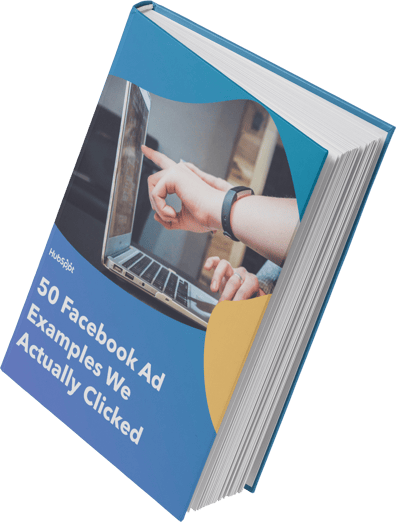
How do Facebook Ads work?
Facebook Ad Placements
Placement 1: Right Column
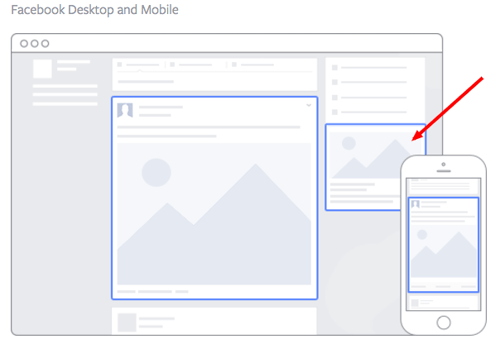
Placement 2: Desktop News Feed
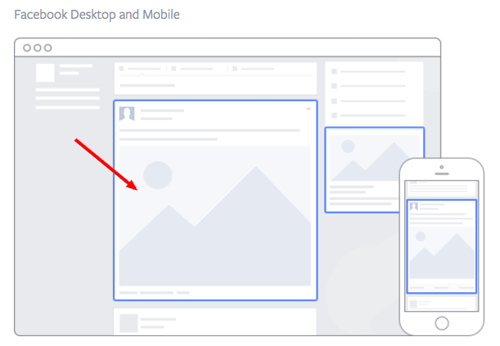
Placement 3: Mobile News Feed
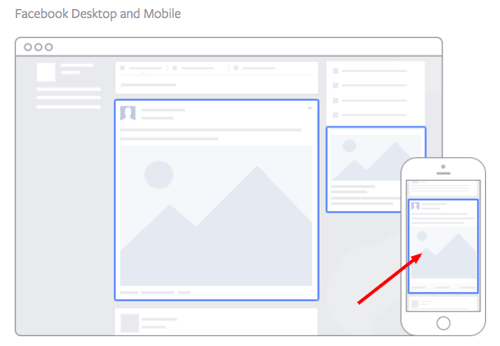
Facebook Ad Formats
Format 1: Photo Ad
Format 2: Video Ad
Format 3: Stories Ad
Format 4: Messenger Ad
Format 5: Carousel Ad
Format 6: Slideshow Ad
Format 7: Collection Ad
Format 8: Playables
8 Facebook Ad Templates
Template 1: Video Product Demo Ad
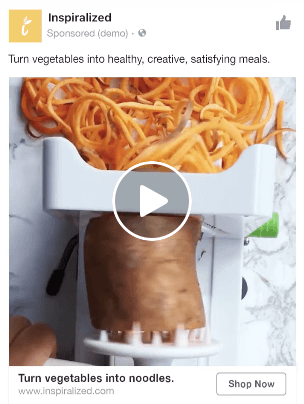
Template 2: Photo Model Ad
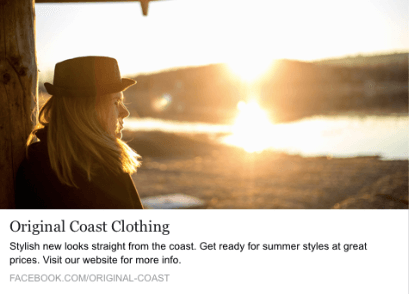
Template 3: Multi-product Ad
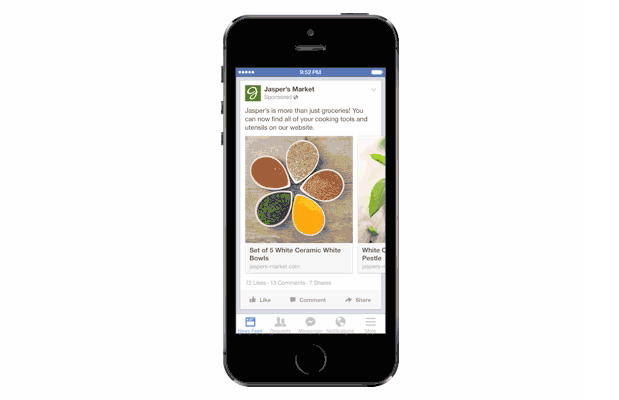
Template 4: Reach Ad
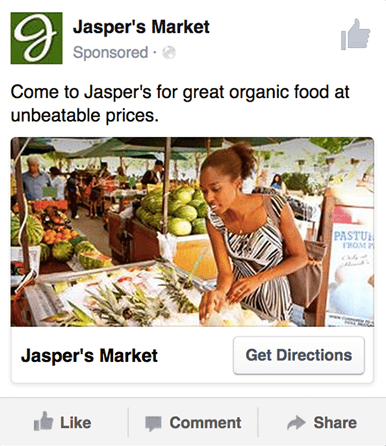 Image via Facebook
Image via Facebook Template 5: Special Offer Ad
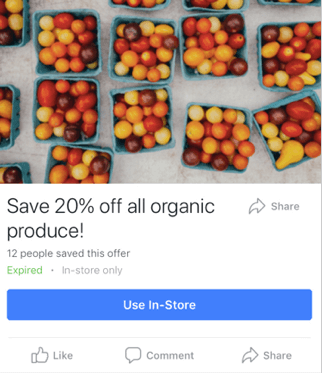 Image via Facebook
Image via Facebook Template 6: Event Ad
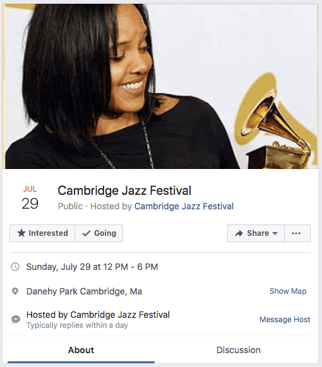
Template 7: Boosted Ad
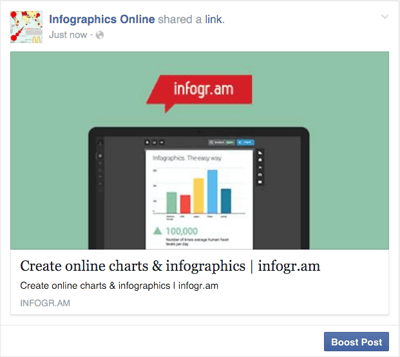 Image via Stealth Seminar
Image via Stealth Seminar Template 8: Retargeting Ad
Best Facebook Ad Examples
1. SofaLush
Video Ad
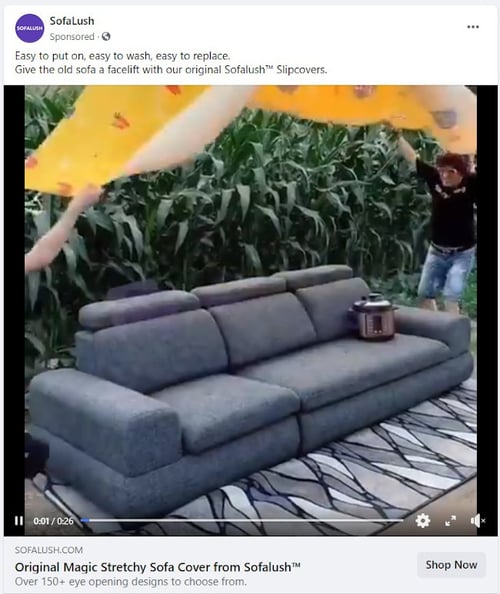
Why This Ad Works
2. Lume Deodorant
Video Ad
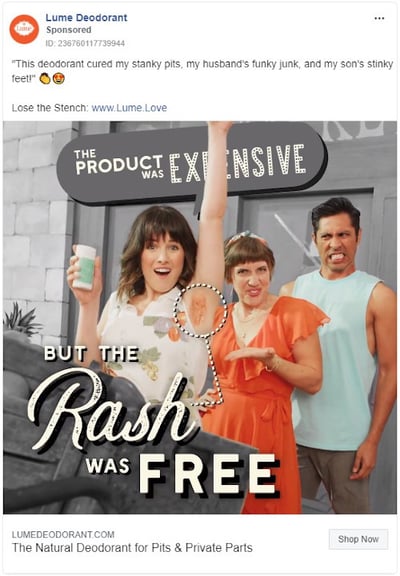
Why This Ad Works
3. Kay Jewelers
Video Ad
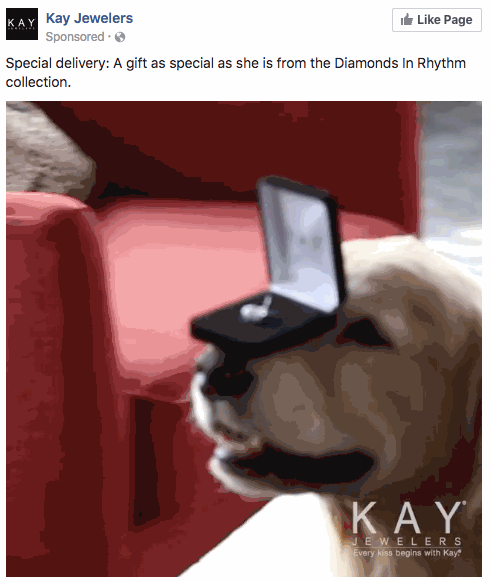
Why This Ad Works
4. Monday.com
Photo Ad
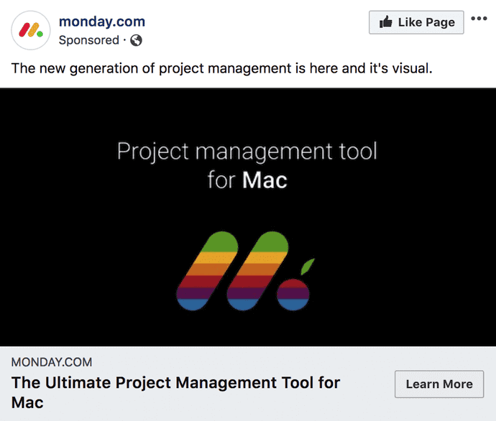
Why This Ad Works
5. Amazon
Event Ad
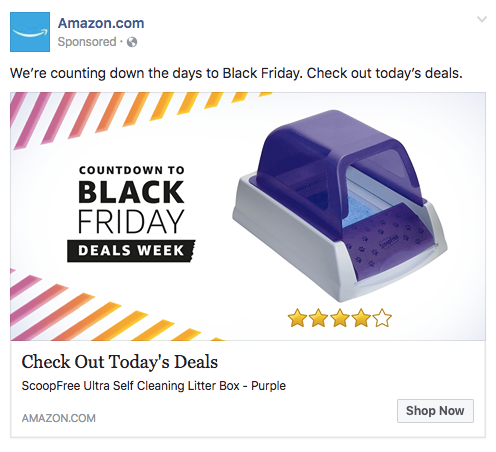
Why This Ad Works
6. NatureBox
Photo Ad
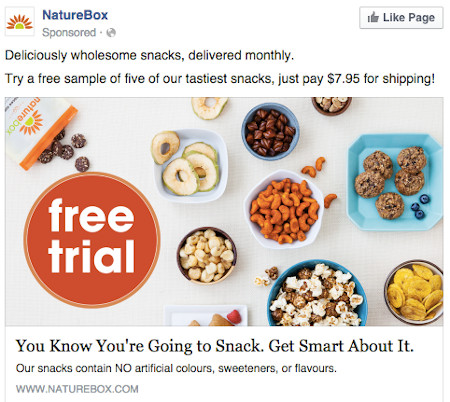
Why This Ad Works
7. Winc
Retargeting Ad
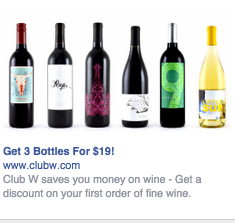
Why This Ad Works
8. Shutterfly
Multi-Product Ad
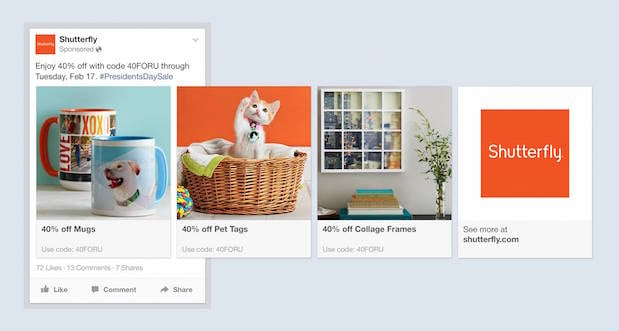
Why This Ad Works
9. MU Campus Dining
Reach Ad
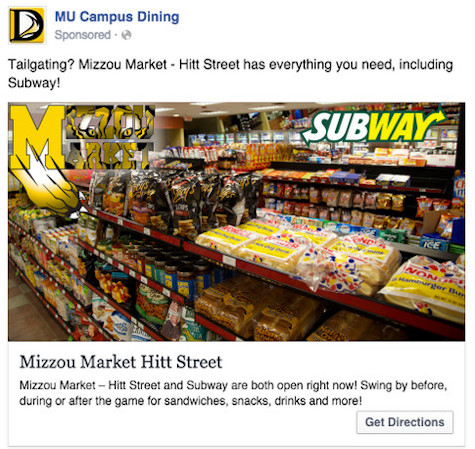
Why This Ad Works
10. Boston Sports Clubs
Offer Ad
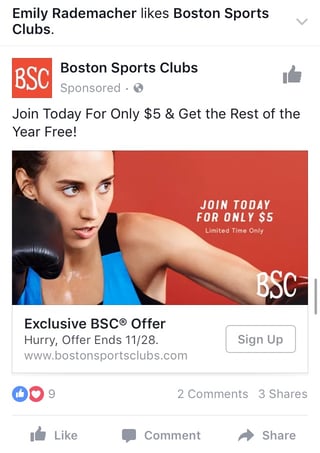
Why This Ad Works
11. Allbirds
Video Ad
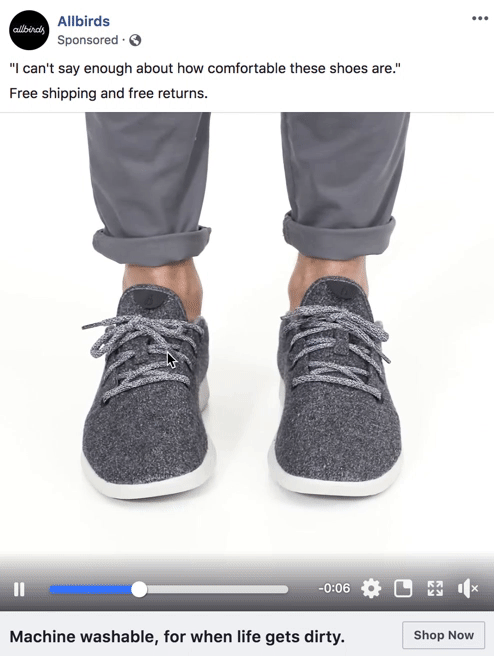
Why This Ad Works
12. The New York Times
Photo Ad
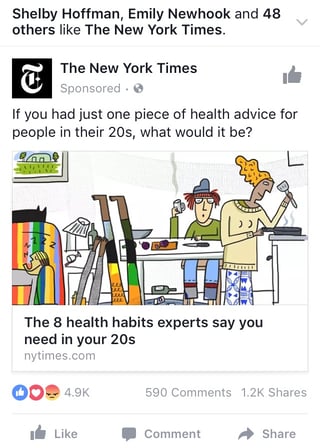
Why This Ad Works
13. Tortuga Music Festival
Event Ad
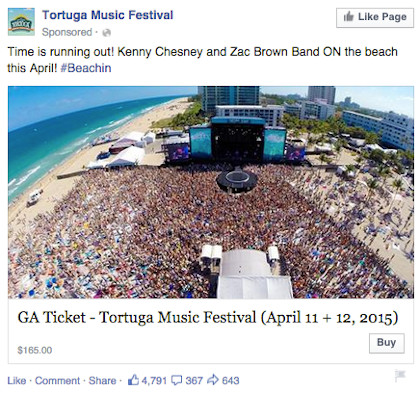
Why This Ad Works
14. Adrianna Papell
Retargeting Ad
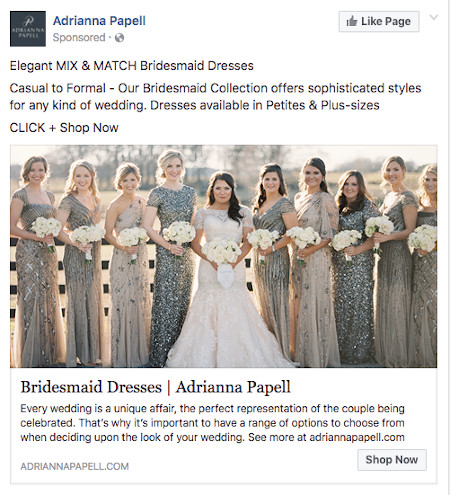
Why This Ad Works
15. Bustle
Boosted Post
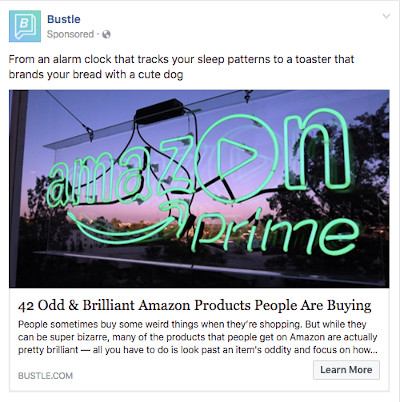
Why This Ad Works
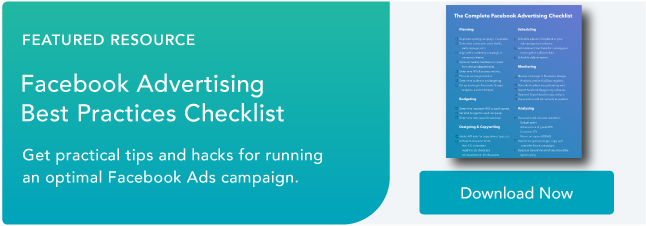
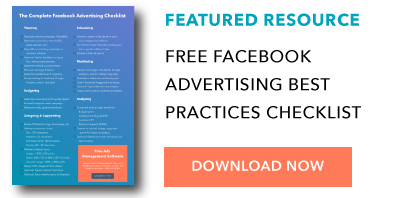
Originally published May 17, 2020 5:00:00 PM, updated June 11 2021
What Facebook Posts Say About You
Source: https://blog.hubspot.com/blog/tabid/6307/bid/33319/10-examples-of-facebook-ads-that-actually-work-and-why.aspx
Posted by: brownsheill.blogspot.com

0 Response to "What Facebook Posts Say About You"
Post a Comment